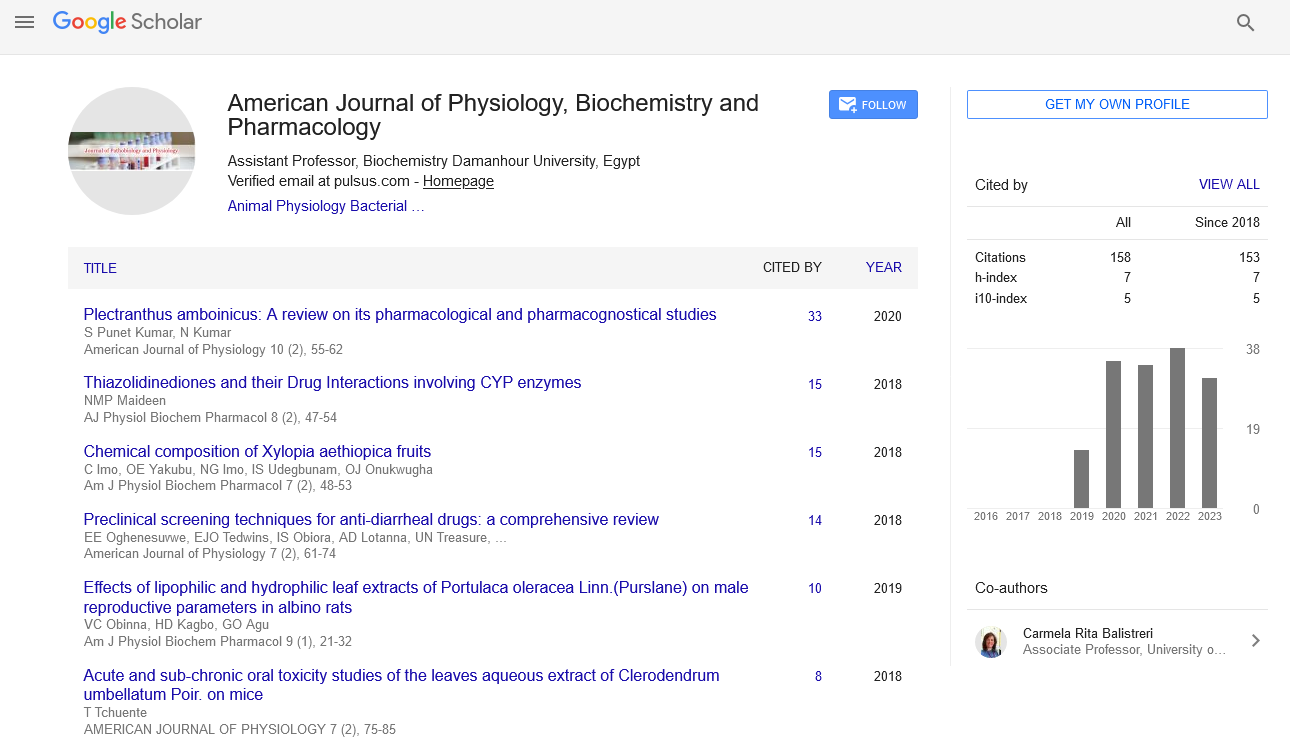Commentary - American Journal of Physiology, Biochemistry and Pharmacology (2022)
Development of Human Physiology and its Different Aspects
Smithe Delaney*Smithe Delaney, Department of Pharmaceutical Biosciences, Uppsala University, Uppsala, Sweden, Email: smithedelan@gmail.com
Received: 04-Nov-2022, Manuscript No. AJPBP-22-81963; Editor assigned: 07-Nov-2022, Pre QC No. AJPBP-22-81963 (PQ); Reviewed: 21-Nov-2022, QC No. AJPBP-22-81963; Revised: 27-Nov-2022, Manuscript No. AJPBP-22-81963 (R); Published: 05-Dec-2022
Description
The study of physiology focuses on how living things work. The majority of physiology is based on laboratory-based basic research studies. Some physiologists conduct research on individual proteins or cells, while others may look at how cells interact to produce tissues, organs, and bodily systems. The chemistry and physics of the structures are involved by physiology. Understanding the mechanism is known as homeostasis, by which the human body maintains a constant state while responding to environmental factors. It is central to the study of physiology. It is a branch of biology that focuses on a variety of issues such cells, biological chemicals, organs, anatomy, and how these things work together to support life. Human physiology is the study of physiological characteristics of the human body at several levels of organisation, by ranging from cellular to tissue and finally, physiology at the level of the biological system. Human physiology is crucial because it provides a thorough grasp of the processes that the body goes through in order to achieve the ultimate objective of preserving homeostasis. Types of human physiology are such as Cell physiology, Special physiology, Systemic physiology, Pathophysiology.
Cell physiology is the cornerstone of human physiology. It is the study of functions of cells. A curriculum that focuses on the scientific study of physiological processes by occurring within and between cells, as well as intracellular communication and behaviour, in the context of bigger systems and complete organisms. Cell biologists working in animal, plant, and medical science will be able to develop new vaccines, more efficient medications, plants with improved qualities, and through increased knowledge, a better understanding of how all living things live by how cells function in both healthy and diseased states.
Special physiology is the physiological study of specialised organs, are such as cardiac physiology, which is the study of heart function. The physiological examination of particular organs is known as special physiology.
Systemic physiology is includes all aspects of function of the body systems are such as cardiovascular physiology, respiratory physiology, reproductive physiology etc. Systemic physiology is a subfield of physiology that focuses on the analysis of particular organ systems and how they work. The specifics of how the digestive system functions to carry out the functions of ingesting, digestion, absorption, and excretion would be included in this. Systemic physiology is analogous to systemic anatomy since it is the study of the functions of multiple body systems are such as renal physiology and neurophysiology.
Pathophysiology is the study of effects of diseases on organ or system functions. The studies of abnormal physiological processes that originate from contribute to, or are somehow connected to a disease or damage is known as pathophysiology. The disturbance of typical steady-state interactions is emphasised in pathophysiology, which also takes into account the minor, acute, and chronic components of disease. This creates a bridge between the fundamental medical sciences and how they are used in the clinic.
The study of human physiology focuses on how the body functions. It explains the chemistry and physics of fundamental bodily processes, ranging from the interactions of molecules in cells to the coordination of organ systems. The human body’s organ systems must cooperate in order to keep it alive and in good health.
Copyright: © 2022 The Authors. This is an open access article under the terms of the Creative Commons Attribution NonCommercial ShareAlike 4.0 (https://creativecommons.org/licenses/by-nc-sa/4.0/). This is an open access article distributed under the terms of the Creative Commons Attribution License, which permits unrestricted use, distribution, and reproduction in any medium, provided the original work is properly cited.






